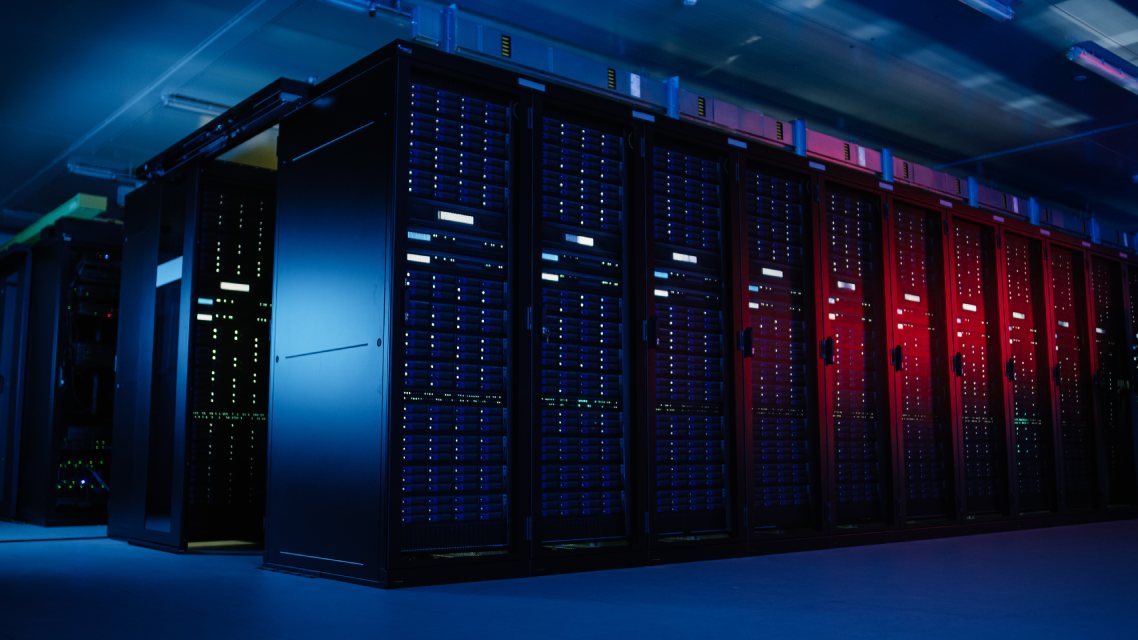
Best Practices for Server Performance Monitoring
As essential components of any IT infrastructure, servers require constant care and maintenance. Server failure or downtime can disrupt workflows and result in the loss of critical business data, negatively impacting the business’s bottom line. Server performance monitoring allows IT teams to track the server’s performance-related issues such as resource utilization, response time, and application downtime, among others. However, with many available server performance monitoring tools, tracking such issues can be complex. Find out more about the key metrics and best practices for server performance monitoring in this post.
What Is Server Performance Monitoring?
Server performance monitoring is the process that gathers metrics about the operations of servers to ensure everything functions as expected. It monitors the server’s system resources such as CPU utilization, memory consumption, disk usage, input/output (I/O) performance, network uptime, and more.
A single server can support hundreds or even thousands of application requests in a typical organization simultaneously. As such, ensuring that the server’s infrastructure works as expected is crucial for your business continuity management initiatives. For example, IT teams can only support capacity and plan efficiently if they understand the server’s resource consumption.
Why is Server Performance Monitoring so Important?
Server monitoring is necessary to detect any performance issues before they affect the end-user. Server monitoring also aids in the comprehension of the server’s system resource utilization. This allows you to properly plan the server’s capacity.
Monitoring the server offers a decent indicator of its responsiveness and availability – all in the interest of ensuring that your clients’ service is delivered without interruption.
Metrics monitoring can also reveal a cybersecurity concern. This is especially important in online hosting because web server exposure might result in a higher hazard profile.
How Do You Monitor Server Performance?
To decide whether your servers are functioning properly or not, you need to measure different performance metrics. Some metrics that can help you determine the efficiency of your servers include a server’s physical status, uptime, and processor utilization. You should also review disk, process, and network activity along with ensuring time synchronization and reviewing the OS logs.
Server Physical Status
You don’t need to worry about the servers’ physical status if you only use cloud servers. However, this doesn’t apply to on-premises servers that require protection from environmental hazards and damages. Besides keeping such servers in a safe room to avoid attacks, you’ll need to ensure that the temperature of the servers doesn’t surpass the recommended levels to achieve optimal performance.
In this regard, you need to monitor two issues: power supply and temperature. If you’re keeping your servers in a cabinet or rack, there are chances that the housing includes power supply and temperature regulation systems. If the temperature surpasses the safety threshold, it is an indication that a fan in either the rack or the server has stopped functioning.
Processor and Memory Utilization
CPU and memory utilization are vital historical metrics that IT teams can leverage to monitor a server’s performance. If the server’s processor is highly utilized (close to 100%) or the system has high memory consumption, applications running on that server will suffer severe performance degradation.
You should determine the compute-intensive processes on the server to quickly troubleshoot and resolve the resource utilization issue. Context switching is also an essential factor that you should consider. This is because many resources get utilized when the kernel switches the CPU from one process or thread to another.
Although the interrupt rate will increase context switching in processors naturally, a high context switching frequency may indicate that the server is processing many requests.
Server Uptime
Uptime refers to the period when the server is fully operational and available for use. You can calculate this measurement in minutes or seconds and express it as a percentage of the time the server was last booted. Monitoring the uptime is essential because it can alert you whenever the system goes down.
For example, if you auto-applied OS update inadvertently, the system can reboot in the middle of a workday and affect users. Also, many businesses reboot their systems periodically. By monitoring the server uptime, IT teams can receive notifications if the system fails to restart in a particular configured reboot cycle.
Disk Activity and Page File Usage
Disk activity is the period that a disk is busy, either reading or writing data. Monitoring disk activity is crucial in input/output operations per second (IOPS)-intensive applications such as e-commerce systems. Below are some essential metrics you can measure when it comes to disk activity:
- Disk busy time. This indicates the percentage of time that the disk is active. A high value means that requests to access the disk are increasing or piling up.
- IOPS. IOPS measures the workload on the disk drive. IT teams can use this metric to understand the workload and the performance characteristic of the storage device.
- Disk read/write time. It computes the time to read or write blocks of data on the disk drive. A lower value indicates good performance.
- Disk queue length. This indicates the time taken to service each application request in a queue. The metric should be minimal for best performance.
Process Activity
There are many cases where a process can create another process without stopping the previously initiated processes. Multi-tasking across such processes can overwhelm the performance of your server. In this regard, you should always monitor and track the processes running on the server.
Network Traffic and TCP Activity
A malfunctioning network interface card (NIC) can degrade server performance severely. Ensure you track the number of errors on each server’s NIC to discover the ones that have excessive packet drops. You should also track the bandwidth consumption on each interface.
The chances of server performance degradation are high if the interface’s bandwidth consumption is close to the maximum speed. Besides network traffic, transmission control protocol (TCP) activities can also impact the server’s performance because most typical applications are connection-oriented. Three metrics can help you track the TCP activity:
- Connection rate. The rate of connections indicates the workload on the server. A lower connection rate may also mean that the server is under attack.
- Connection drops. Excessive connection drops indicate a malfunctioning server or network.
- Percentage of retransmissions. Repeated retransmissions can lead to a severe reduction in throughput.
Time Synchronization
Applications on the same network that communicate or share files have time-dependent activities. Without an efficient and synchronized clock system, such applications can have disastrous outcomes. For example, inaccurate clocks can create version conflicts in applications or even cause data to be overwritten.
In the worst-case scenario, an inefficient clock system can cause applications to malfunction. To ensure your applications have accurate time-bound activities, you should monitor the server’s clock offsets against a master clock constantly.
OS Logs
It is difficult to implement every component of a server OS fully. Log files can help you determine the details of any crashes seen, faults experienced, and other abnormalities. For example, Windows Server OSs have the system, security, and application log files that you can use to discover which events are informational or critical.
Likewise, Unix servers have log files stored in the /var/log directory that you can use to obtain insights about abnormal events on the server.
What Are Some Server Performance Best Practices?
A cohesive server-monitoring strategy that ensures optimal performance is crucial in today’s fast-paced and complex IT environments. Below are four best practices you can implement to ensure your server monitoring approach is accurate and efficient:
- Always examine the whole system. Rather than just determining a single metric, you should measure everything. This will help you understand what your ideal performance should be. For example, while CPU utilization might be higher, it does not mean the processor is necessarily the problem. It could be high because of other issues such as memory and hard disks.
- Ensure you monitor the server consistently. You can only achieve an efficient performance if you monitor the server constantly. Without such a strategy, you can easily miss many server issues until it is too late.
- Monitor the key metrics relevant to your specific server. You should be sure to track the essential metrics related to the server. Measuring specific metrics on a continuous basis can help you pinpoint server issues so you can troubleshoot and fix them quickly.
- Make use of monitoring tools. Using tools to monitor the performance of your servers is essential because it helps you automate manual tasks and detect and fix problems.
What Should You Consider When Choosing a Monitoring Tool for Server Performance Monitoring?
Below are some features you should look for when selecting a server monitoring tool:
- Balancing of Performance and resources. An efficient server-monitoring tool is one that uses the minimum system and network resources to do the job.
- The flexibility of the software. Before you settle on a particular tool, it is crucial to understand the application’s use cases. Some applications are elementary, only monitoring resource consumption. Others are robust and can track everything from resource utilization to bandwidth consumption to in-depth analysis of nodes. A versatile tool can help you undertake extensive monitoring while saving you costs.
- Ease of use. Many monitoring tools provide detailed charts, graphs, and statistics to help IT teams understand server performance metrics better. However, the way this data is organized and presented is crucial to understanding the measurements. The ability to quickly identify which report areas are valuable can help you enhance efficiency and get more out of the server monitoring software.
- Ease of deployment. Before you decide which performance monitoring software to purchase, you should determine whether the tool requires installation on every machine in the network or a centralized system. You should also determine whether the software is a cloud-based service or not.
- Metric Coverage. Your monitoring tool should gather and analyze all of the metrics that are important to you. Some systems only offer a few metrics, while others include a large number of metrics that you don’t need. You must also be able to configure and specify the metrics you require to suit your requirements.
- Anomaly Detection. Setting a specific threshold for a metric to generate an alert is not always achievable. You may not know you require an alert until something disastrous occurs. Most of your notifications will be automated and set for you by technologies with anomaly detection capabilities that are linked to machine learning and artificial intelligence.
Monitor and Improve the Performance of Your Remote Access Infrastructure with Parallels RAS
Parallels® Remote Application Server (RAS) is an integrated virtual desktop infrastructure (VDI) solution that organizations can leverage to virtualize their applications and desktops. It publishes corporate resources to any device on any platform, allowing employees to access them from any location.
Parallels RAS has a performance monitor that IT teams can provision on a dedicated server or any cloud-hosted ecosystem to track virtualization components. The performance monitor provides IT teams with valuable metrics such as CPU usage, session information, free memory, disk utilization, and network usage.
IT teams can use these metrics to improve the performance of Windows Server and virtualization environments effortlessly.
Experience firsthand how Parallels RAS monitors and improves the performance of virtualization environments!

